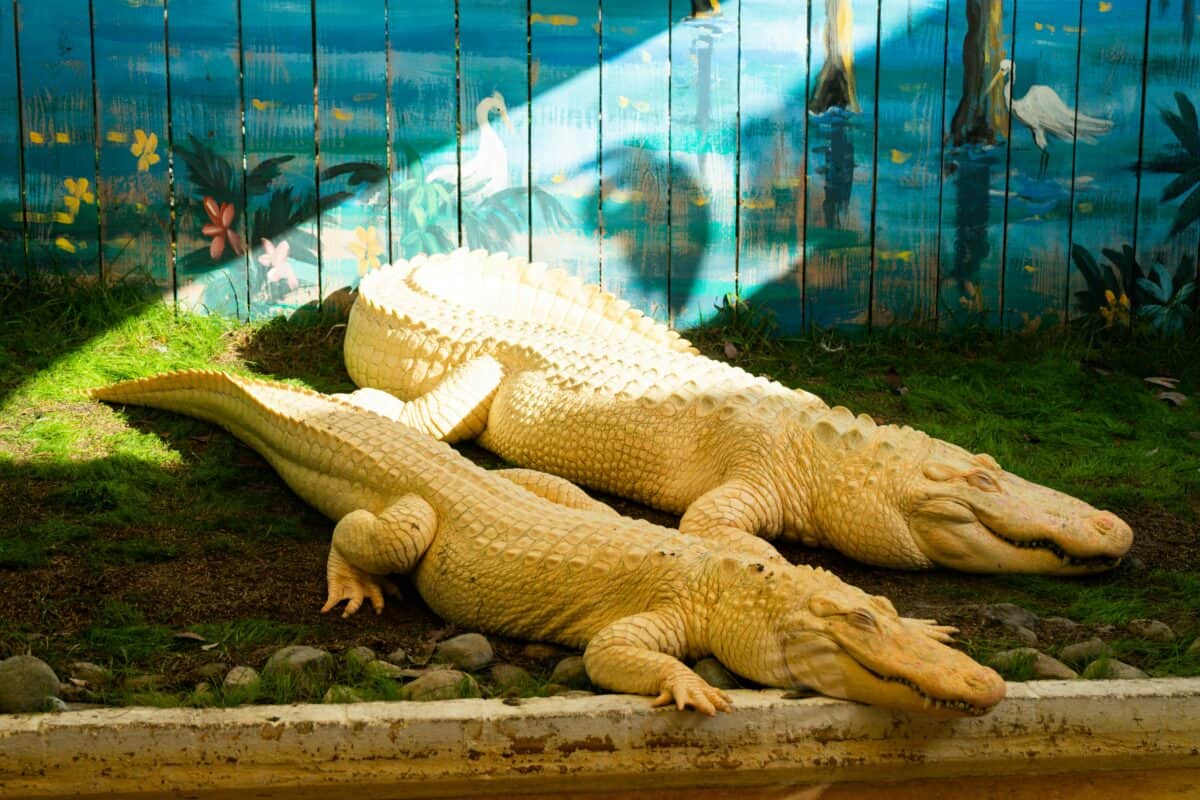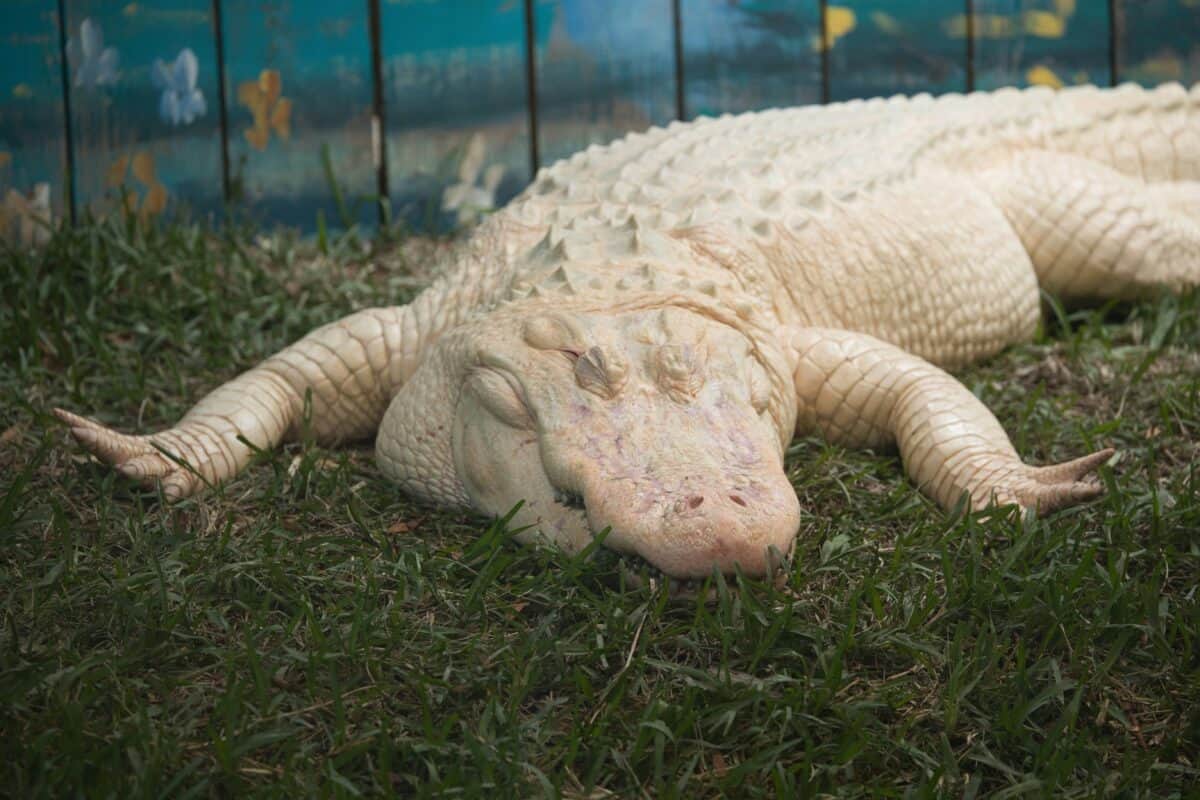In the world of reptiles, few creatures turn heads like Claude—the pale, pink-eyed alligator that looks more ghost than gator. Now, this living anomaly is beaming into homes around the world via livestream, and people can’t get enough.
A Pale Legend Comes Alive

Claude, an albino American alligator, has been living at the California Academy of Sciences in San Francisco since 2008. He was born in 1995, and due to his lack of melanin—a condition called albinism—he has stark white skin and pink eyes. This white alligator’s appearance is so rare that only a tiny handful of alligators like him exist anywhere on Earth.
To share this living wonder with the world, the Academy recently launched the “Claude Cam,” a 24/7 livestream that lets anyone watch him swim, blink, and bask—offering a rare look at one of nature’s most unusual survivors.
Why Claude Is Captivating Viewers Around the World
People aren’t just watching because he looks different. Claude’s daily routine reveals a lot about gator behavior—and offers a surprisingly calming viewing experience.
Here’s why he’s getting so much attention:
- He’s one in a hundred: Fewer than 100 albino alligators are known to exist, and most don’t live long in the wild due to their visibility to predators and sensitivity to sunlight.
- It’s educational, not just entertaining: Claude shows off typical alligator behaviors—like still-water floating and lazy blinking—in a safe, accessible way.
- He’s a conservation symbol: His unique appearance helps people understand how rare genetic traits can affect survival and how zoos can support vulnerable species.
- Tech helps tell his story: The livestream is a simple but powerful way to connect people with nature, especially those who can’t visit in person.
What White Alligators Face in the Wild

Claude may look cool and collected, but his albino condition comes with major challenges—especially for those born in the wild. Without protective pigment, these alligators are highly sensitive to sunlight and stand out to predators like birds or raccoons as hatchlings.
Most white alligators born in nature don’t make it past a few weeks. That’s why protected environments like zoos are sometimes the only places where they can grow old. Claude’s habitat is carefully designed with shaded areas and filtered water to keep him comfortable and healthy.
A Closer Look at His Role in Conservation
It might seem strange to call a lounging alligator a conservation hero, but Claude earns that title in his own quiet way. Here’s how:
- He raises awareness: Just by existing, Claude sparks curiosity in visitors who may never think about reptile conservation otherwise.
- He helps educators: Schools and science centers use his story to talk about genetics, adaptation, and habitat loss.
- He brings wildlife to the masses: Claude’s camera connects kids and adults alike to a wild world without leaving the house.
Not Just a Gator, But a Global Ambassador
Claude’s ghostly appearance might be what draws people in—but what keeps them watching is something deeper. He’s a symbol of how rare and fragile nature can be. In an age of distraction, the Claude Cam offers a quiet moment to slow down and remember: wildlife isn’t always ferocious or flashy—sometimes it just floats.
- Bride Surprises Groom With Rescued Animals at Bachelor Party - August 7, 2025
- White Deer Duo Stuns Iowa Family on Backroad Drive - August 1, 2025
- Iguana Fell and Hit Florida Man in the Face During Cold Snap - July 18, 2025

